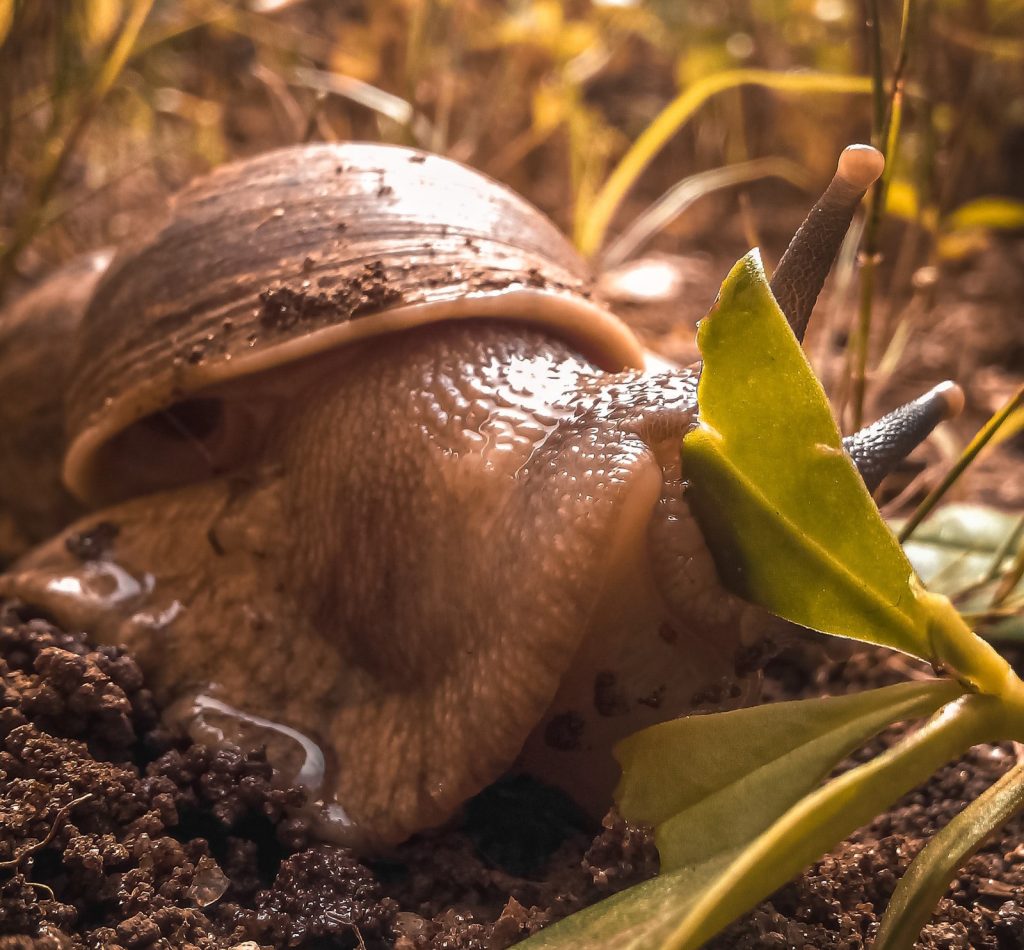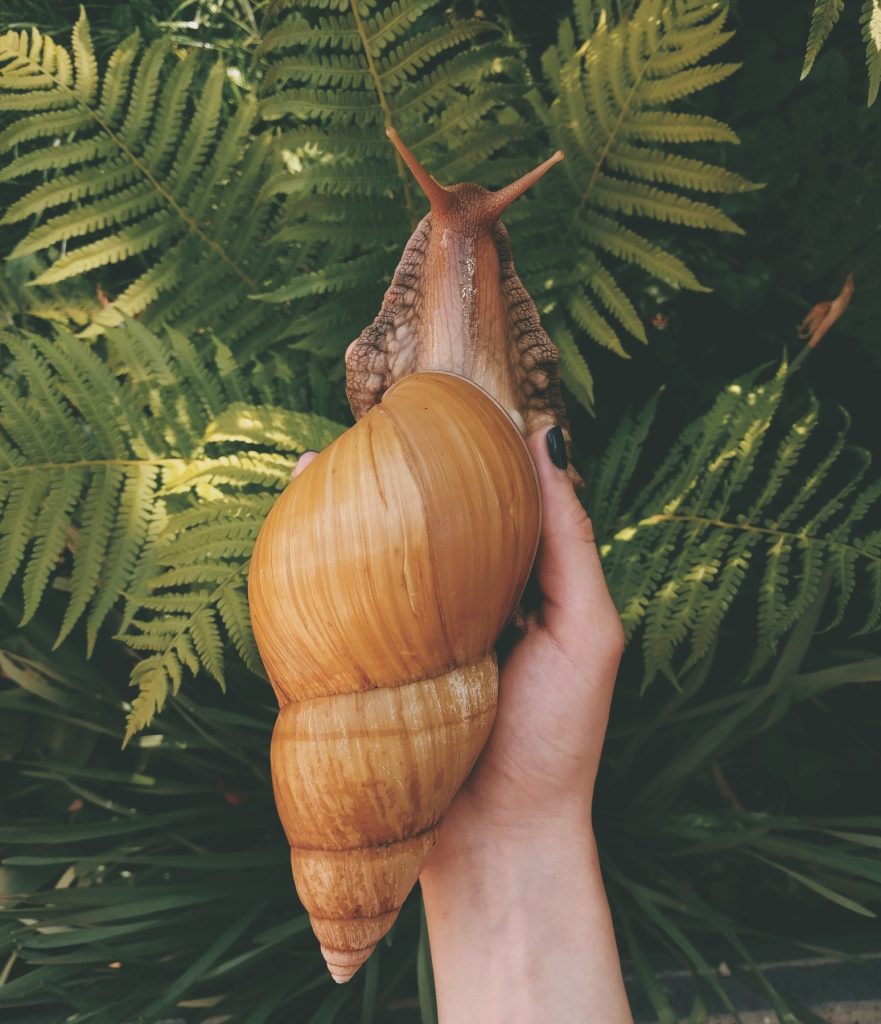By MSc Gvapo Tripinovic and Adam Tripinovic
Hello, and welcome back.
Today Adam and I have prepared for you a new educational article and YouTube video about SNAILS.
Snails have been around for over 500 million years; they can be deadly to humans and eat each other.
Intrigued? So are we! Let’s dive into the fascinating world of snails.
Did you know that the world’s tiniest snail is only 2.5 millimeters or 0.09 inches long? Or about the size of a grain of sea salt!
Despite its small size, the Samoana litterata is a tough species that can survive successfully in the forests.
Native to West Africa, the Giant African snail is the world’s largest species. It can grow to 30 centimeters or nearly 12 inches.
The Giant African snail feeds on plants, fruits, and other vegetation. A single snail can consume up to 500 grams of food in one day!

It can eat large amounts of crops and other vegetation, causing significant economic and environmental damage.
Despite its size, the Giant African snail is slow-moving and vulnerable to predators like birds and reptiles.
He has evolved to have a large and protective shell to defend himself.
While most snails eat plants, some prefer to eat other snails.
The decollate snail (Rumina decollata), native to the Mediterranean region, is one such species.
It is an effective predator, consuming a large number of other snails in a single day.
Its preferred food is a common garden snail.

They are beneficial snails and are used by farmers as biological pest control to reduce other snail populations in gardens and crops.
Snails are hermaphroditic, which means they have both male and female reproductive organs.
Snails mate unusually and fascinatingly.
They will often engage in a courtship ritual before mating, during which snails touch and taste each other with their tentacles to determine compatibility.
Using a “love dart” is one of the most distinguishing characteristics of snail mating.
When a snail is ready to mate, it will extend its love dart and use the sharp tip to pierce the skin of its mate.

It is important to note that love darts are unnecessary for snail mating in some cases, and some snail species do not use them at all.
A snail lays up to 100 eggs at once!
They will lay their eggs in safe and moist environments.
The eggs are typically encased in a protective jelly-like substance that keeps them moist and safe from predators.
They can lay eggs several times yearly, dramatically increasing populations in favorable conditions.

The eggs typically hatch in 2 to 4 weeks.
Baby snails, or hatchlings, are miniature versions of adult snails with small but fully formed shells after hatching.
Snails belong to the mollusk family, which also includes clams and squids.
If a snail floats, that doesn’t mean it’s dead.
Snails can float on the water’s surface by using their shells.
Snails can breathe underwater due to a specialized respiratory organ known as a mantle.
The mantle is a moist, fleshy tissue that covers and protects the snail’s internal organs. It also contains a network of blood vessels that helps to exchange gases and regulate the snail’s respiration.
However, not all snails can breathe underwater, so some species prefer to stay in moist environments and not venture into the water if they don’t have to.

Snails are one of the most widely distributed animal groups on the planet, living in a wide range of habitats and environments.
They can be found worldwide, from deserts to rainforests and oceans.
We can find desert snails in areas with high humidity or near water sources, such as oases or springs. These snails have thick shells to conserve moisture and protect their bodies from heat.
In rainforests, they feed on decaying vegetation and aid in the breakdown of organic matter.
Some rainforest snails prefer to prey on other snails, insects, and small vertebrates.
We can find snails in both saltwater and freshwater environments.
Saltwater snails are abundant and diverse, serving as prey for other animals such as sea turtles, seabirds, and fish.
Freshwater snails live in rivers, lakes, and ponds, where they eat algae and aquatic plants.

Snail species in various habitats include:
• Desert snail: The garden snail, Helix aspersa, is found in deserts and arid regions worldwide.
• Rainforest snail: The spotted snail, Pupa strigosa, is found in Southeast Asian rainforests and is known for its distinctive shell pattern.
• Saltwater snail: Conus textile, also known as the textile cone snail, is found in coral reefs and other shallow-water environments throughout the world’s tropical and subtropical regions.
• Freshwater snail: The pond snail, Lymnaea stagnalis, is found in freshwater environments worldwide and is an essential part of the food chain in many aquatic ecosystems.
Snails’ ability to live in various habitats and environments demonstrates their group’s adaptability and versatility.

Snails can be deadly!
Some snail species are venomous and can be dangerous to people. These snails create conotoxins.
These snails create conotoxins.
The cone snail is one of the most well-known examples of a poisonous snail species.
These snails are found in warm, tropical waters and are recognizable for their distinctive, cone-shaped shells.
The cone snail uses its harpoon-like radula (a flexible, toothed tongue-like organ) to capture its prey, injecting it with a potent cocktail of toxins.
A bite from a cone snail can cause severe pain, swelling and lead to respiratory failure or death if not treated immediately.
If you assume a toxic snail has bitten you, seek medical attention immediately.

Snails can live up to 10 years!
Examples of snail species with different lifespans include:
- Channeled apple snail (Pomacea canaliculata): 2-3 years
- Brown garden snail (Cornu aspersum): 2-5 years
- Marsh snail (Lymnaea palustris): 3-5 years
- Garden snail (Helix aspersa): 3-5 years
- Giant African snail (Achatina fulica): 5-10 years
Snails can sleep for a few years at a time, particularly during drought or cold weather.
The Roman snail and the Helix aspersa are popular delicacies in many nations.
Additionally, snails are a rich source of proteins and minerals.

As well snails have found their place in cosmetic and medical applications. Especially for skin care.
As always, thanks for tuning in!

We hope you enjoyed learning more about snails today, and thank you for visiting our website ParentingDad.
While here, please check some of our other Educational, Active Life and Healthy Food, or How to be a Better Dad – Q & A articles.
If you’d rather watch a video or listen to our articles, check out our YouTube channel, Top 10 Facts.
You can find more great articles and videos about animals here:
Alpacas, Ants Rescue Their Injured Friends, Butterflies, Cheetahs, Dolphins, Do Fish Sleep, Dogs – Which dog breeds are the smartest, Elephants, Great White Sharks, Sharks in aquariums, Snakes, Hummingbirds, Jellyfish, Lions, Pigeons, Red Pandas, Owls, Seagulls, Snails, Squirrels, and Wolves.
If you found this ant rescue story fascinating, be kind and share it with your friends.
And remember to return to our blog ParentingDad.com for more incredible insights into the fascinating world of nature.
Until next time, keep exploring and appreciating the wonders of our planet!
Adam and I wish you a great day. Stay well, and keep smiling.
Keep being curious and asking questions!
This article might contain links to the products, so we can get a small commission if you buy them. That way, you support this blog and our educational YouTube channel, for which I am thankful.

